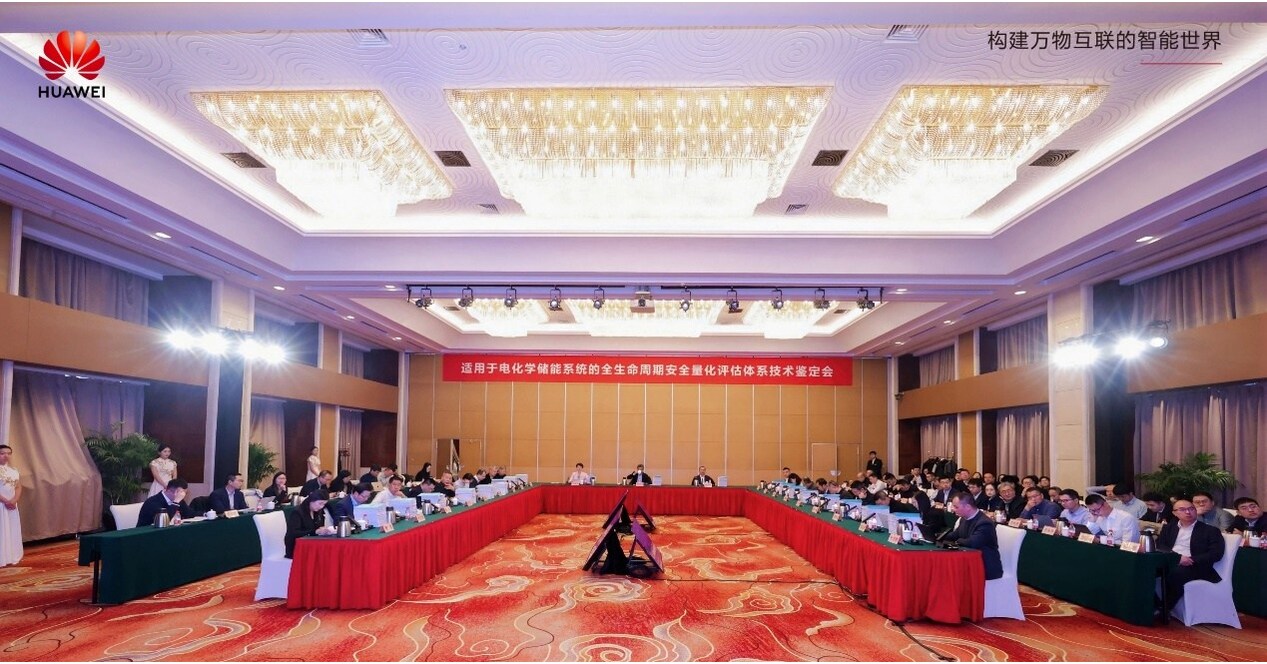The evolution of alert systems has significantly transformed corporate communication, particularly in the realm of crisis management. As organizations face increasing threats from various fronts, the need for efficient and effective alert systems has become paramount. This report delves into the key findings regarding the advancements in these systems and their substantial implications for corporate operations.
Historically, alert systems were rudimentary, relying primarily on basic communication tools such as emails and phone calls. However, today’s alert systems incorporate sophisticated technologies, including automated notifications, real-time data analytics, and integration with various communication platforms. These technological advancements facilitate rapid dissemination of critical information, allowing organizations to respond promptly to emergencies. The role of alert systems in crisis response cannot be understated; they serve as the backbone for coordinating efforts among team members, streamlining communication, and ensuring that stakeholders are informed and engaged during critical events.
Moreover, the financial implications of implementing robust alert systems are significant. Companies that invest in advanced alert systems often experience reduced downtime during crises, leading to more efficient recovery processes and ultimately safeguarding their financial interests. The costs associated with poor crisis communication can be astronomical, including loss of revenue, reputational damage, and legal liabilities. Therefore, to remain competitive, businesses must prioritize the establishment of sophisticated alert systems that not only enhance communication but also protect their financial assets.
In conclusion, this report illustrates the crucial role alert systems play in modern corporate communication. As technology continues to evolve, businesses must adapt and embrace these changes to optimize their crisis response strategies and ensure sustained success.
Introduction to Alert Systems
Alert systems serve as crucial tools within corporate communication, designed to disseminate important information quickly and effectively. These systems enable organizations to send messages regarding emergencies, updates, or critical announcements, ensuring that every relevant stakeholder is informed in a timely manner. The primary function of alert systems is to enhance communication flow and facilitate immediate responses, thereby minimizing potential risks and fostering a proactive corporate culture.
The evolution of alert systems can be traced back several decades. Initially, communication in businesses was primarily manual, relying on traditional methods such as memos and face-to-face meetings. As technology advanced, the introduction of telephones and radios marked significant milestones in corporate communication. However, it was during the late 20th century that electronic alert systems began to emerge, incorporating email and text message notifications to ensure rapid and efficient communication across various divisions of organizations.
Today, alert systems have evolved further with the advent of sophisticated software and mobile applications. Modern systems are equipped with multi-channel capabilities, allowing messages to be sent via SMS, email, social media, and even automated voice calls. This flexibility is essential in today’s fast-paced business environment, as it ensures that critical information reaches individuals on their preferred platform, thus improving engagement and responsiveness.
The growing importance of alert systems in the business landscape can be attributed to various factors, including increased globalization, the rise of remote working, and the constant threat of crises, both natural and artificial. Businesses are now recognizing that an effective alert system is not merely a technological upgrade but a strategic imperative essential for maintaining operational continuity and ensuring the safety and well-being of employees and stakeholders alike.
Current Market Situation
The current state of alert systems in corporate communication reflects a rapidly evolving landscape shaped by technological advancements and increasing demand for timely information dissemination. According to recent market research, the global alert systems market is projected to reach USD 12 billion by 2025, growing at a compound annual growth rate (CAGR) of approximately 7.5%. This growth highlights the value that organizations place on effective communication tools, particularly those designed for rapid alerting in crisis situations or critical updates.
Adoption rates of alert systems vary significantly across industries. For instance, sectors such as healthcare, finance, and emergency services demonstrate the highest adoption due to the critical nature of their operations and the need for immediate communication during emergencies. The healthcare industry, in particular, has seen a surge in the utilization of alert systems, especially during the COVID-19 pandemic, where timely updates and protocols became essential in managing public health communications.
Key players in the market include well-established companies like Everbridge, OnSolve, and Rave Mobile Safety, which offer comprehensive alert solutions tailored to diverse organizational needs. These companies are continuously innovating their platforms, integrating features such as two-way communication capabilities, geolocation technology, and multi-channel messaging to enhance the efficacy of alert systems. Furthermore, many organizations are increasingly turning to cloud-based solutions, which allow for greater scalability and flexibility, enabling companies to customize their alert parameters based on specific requirements.
Modern alert systems are characterized by their ability to leverage data analytics and artificial intelligence. These technologies enable proactive communication strategies, allowing organizations to predict potential crises and respond effectively. As businesses recognize the importance of reliable alert systems in maintaining operational continuity and safeguarding personnel, the demand for advanced communication tools is expected to grow steadily, making it a crucial aspect of corporate strategy in today’s fast-paced environment.
Key Market Trends and Drivers
The landscape of alert systems in corporate communication has been significantly shaped by several prevailing market trends and drivers. One of the most notable trends is the rapid advancement in technology. The integration of artificial intelligence, machine learning, and big data analytics has enhanced the capability of alert systems to deliver real-time notifications and insights. These technologies not only improve the accuracy and relevance of alerts but also allow for better customization to meet the unique needs of diverse organizations. As technology evolves, so too does the demand for more sophisticated alert solutions that can seamlessly integrate with existing communication platforms.
Another important trend influencing alert systems is the changing expectations of consumers and employees. In an increasingly digital world, users expect prompt, reliable, and user-friendly communication tools. Businesses are now faced with the challenge of meeting these heightened expectations, prompting them to invest in more robust alert systems that facilitate clear and effective communication. The shift towards remote work also highlights the necessity for versatile alert systems that can function across various devices and locations, further underscoring the demand for flexible communication solutions.
Furthermore, regulatory requirements are playing a critical role in shaping alert system functionalities. Organizations must navigate a complex landscape of compliance mandates, particularly concerning data protection and privacy. This has led to an increasing emphasis on alerts that not only communicate essential information swiftly but also ensure adherence to legal standards. As regulatory bodies implement more stringent guidelines, companies are compelled to enhance their alert mechanisms to avoid potential penalties.
In summary, the evolution of alert systems in corporate communication is driven by technological advancements, changing consumer expectations, and the necessity to comply with regulatory requirements. These trends indicate a growing demand for systems that offer customization, efficiency, and compliance, shaping the future of corporate communication. As organizations adapt to these trends, the significance of effective alert systems will continue to be paramount in achieving successful communication strategies.
Financial Implications for Related Industries
The financial implications of employing advanced alert systems within corporate communication cannot be overstated. Industries that hinge significantly on effective communication strategies, such as healthcare, finance, and emergency services, have found that investment in alert systems not only enhances operational efficiency but also substantially reduces costs associated with miscommunication and missed opportunities. To illustrate, a recent study indicated that businesses implementing cutting-edge alert systems experienced up to a 30% reduction in operational disruptions compared to those relying on traditional communication methods.
Cost-effectiveness serves as a critical parameter in evaluating these advanced alert systems. Initially, organizations may perceive the investment as considerable, with costs attributable to software, hardware, and training. However, these expenditures are often mitigated by the long-term savings realized through increased productivity and improved response times. For instance, healthcare providers that adopted modern alert systems reported a notable decrease in emergency response times, directly leading to better patient outcomes and significant cost savings—a compelling illustration of how such technologies can yield substantial financial returns.
Additionally, traditional alert systems often entail hidden costs such as those associated with human error, delayed communications, and inefficient resource deployment. By contrast, investing in sophisticated alert systems translates into streamlined operations and minimizes the risk of costly mistakes. Companies that embrace this technological evolution bolster their ability to respond adeptly to emergencies, market changes, and internal crises, thereby securing not only their financial health but also their market position.
In conclusion, the integration of advanced alert systems offers profound financial benefits to industries reliant on effective communications. The measurable cost savings and enhanced operational efficiency underscore the necessity for organizations to evaluate their communication strategies critically and consider investment in modern alert systems as a strategic move for long-term financial viability.
Broader Economic Implications
In the modern corporate landscape, the implementation of alert systems in communication strategies has significant economic implications that can enhance organizational resilience. These systems facilitate timely information dissemination, allowing companies to manage crises more effectively. By promptly addressing potential issues, businesses can mitigate risks that might otherwise escalate into costly crises, preserving both financial resources and brand integrity.
Additionally, alert systems play a pivotal role in enhancing customer service. In an era where consumer expectations are higher than ever, companies that deploy robust communication channels gain a competitive advantage. When clients receive immediate notifications regarding service disruptions, product recalls, or urgent updates, their trust in the brand is reinforced. This proactive approach can significantly improve customer retention rates, which are essential for sustaining revenue streams and driving long-term profitability.
Moreover, an organization’s overall reputation is intrinsically linked to its ability to communicate effectively during pivotal moments. A study by the Harvard Business Review indicates that companies with well-structured communication protocols evaluate their performance favorably, particularly during crises. As organizations increasingly recognize the value of transparency, alert systems empower them to maintain open lines of communication with stakeholders. This transparency not only enhances customer perceptions but also attracts investors who appreciate accountable corporate practices.
It is essential for businesses to recognize that investing in effective alert systems can lead to long-term economic advantages. Organizations that prioritize these systems are better positioned to manage risks adeptly, improve customer interactions, and bolster their reputations. By integrating such communication strategies, companies can navigate the complexities of today’s market environment more effectively, thereby driving sustained economic growth.
Risks and Opportunities
The deployment of alert systems in corporate communication offers significant benefits, but it is accompanied by various risks that organizations must carefully navigate. One of the primary challenges is the vulnerability to cybersecurity threats. As alert systems become increasingly integrated with digital platforms, they also attract malicious actors seeking to exploit weaknesses. These cybersecurity threats can lead to data breaches, which may not only compromise sensitive information but also damage an organization’s reputation. Additionally, the rapid dissemination of alerts can inadvertently contribute to information overload, causing employees to become desensitized to alerts or even overlook critical notifications. Therefore, companies must implement robust security measures and ensure that their alert systems are resilient against potential breaches.
On the other hand, the opportunities presented by effective alert management are substantial. When properly utilized, alert systems can enhance responsiveness and agility within an organization. They enable businesses to react swiftly to critical situations, whether it involves operational incidents, security breaches, or emergency responses. An efficient alert system fosters a culture of transparency and collaboration, ensuring that all stakeholders are informed and can contribute to crisis management efforts. Moreover, organizations that leverage advanced analytics can optimize their alert strategies, tailoring notifications to specific audiences and thereby enhancing engagement and compliance.
Furthermore, companies that invest in sophisticated alert systems often gain a competitive edge. By minimizing downtime and ensuring continuity of operations through timely alerts, businesses can maintain productivity and safeguard their interests. Additionally, a well-implemented alert system can foster client trust, as customers are reassured that their data and transactions are being monitored vigilantly. In conclusion, while the deployment of alert systems in corporate communication presents inherent risks, it also opens the door to numerous opportunities that can significantly enhance organizational resilience and performance.
Expert Insights and Quotes
To gain a deeper understanding of the evolution and impact of alert systems in corporate communication, it is illuminating to consider the perspectives of industry leaders and experts in the field. Jane Thompson, a renowned financial analyst, emphasizes the transformative nature of these systems, stating, “The implementation of alert systems has revolutionized how corporations disseminate information, ensuring that stakeholders are informed of critical developments in real-time.” This sentiment underscores the vital role that timely and effective communication plays in maintaining corporate transparency and trust.
Further supporting this view, Mark Johnson, an expert in corporate communications, notes, “Alert systems not only enhance operational efficiency but also foster a culture of proactive management among teams. When employees are promptly informed about important changes, they are better equipped to respond swiftly and appropriately.” Johnson’s insight highlights the mutual benefits of alert systems, showcasing their ability to empower employees while streamlining organizational processes.
Another perspective comes from Maria Chen, a seasoned technology consultant, who states, “As technology continues to advance, the capabilities of alert systems are expected to expand significantly. They will be integral in environments where speed and accuracy are paramount.” Chen’s assertion illustrates the evolving nature of alert systems and suggests that future innovations will further cement their importance in corporate communication strategies.
These expert insights collectively reflect the growing recognition of alert systems as essential tools in the corporate landscape. By facilitating swift communication and empowering employees, these systems not only mitigate risks but also enhance overall operational resilience. The consensus among industry leaders is clear: alert systems are no longer just an option but a necessity in contemporary business communication strategies.
Future Outlook and Implications
As we look to the future of alert systems in corporate communication, it is evident that technological advancements will play a significant role in shaping their functionality and effectiveness. The ongoing evolution of artificial intelligence and machine learning stands to enhance the capabilities of alert systems, allowing for real-time data analysis and predictive alerts. As organizations collect more data, these systems will become better equipped to provide timely information, adapting to specific corporate environments and needs. This trend indicates a movement toward increasingly personalized alert mechanisms that address the unique circumstances of different businesses.
Moreover, the integration of cloud technology will likely increase the accessibility and scalability of alert systems. Companies can expect to utilize reliable, centralized platforms that facilitate seamless communication across various devices and remote locations. Enhanced collaboration tools, combined with alert systems, will foster a more interconnected work environment where employees receive vital updates efficiently, irrespective of their physical location. This shift is essential in a world where hybrid work models are becoming progressively popular.
However, with these technological advancements come implications surrounding data privacy and security. Organizations will need to navigate the complexities of ensuring that alert systems comply with regulatory standards while also protecting sensitive information. Failure to address privacy concerns could result in significant repercussions, damaging both reputation and client trust. Consequently, businesses must establish transparent communication strategies that prioritize user consent and data protection, thereby fortifying their commitment to ethical practices in digital communication.
In conclusion, the future of alert systems in corporate communication hinges on a delicate balance between technological innovation and ethical responsibility. While the potential for heightened efficiency and personalization is significant, companies must remain vigilant in addressing the associated challenges to maximize their effectiveness and maintain trust with stakeholders.



